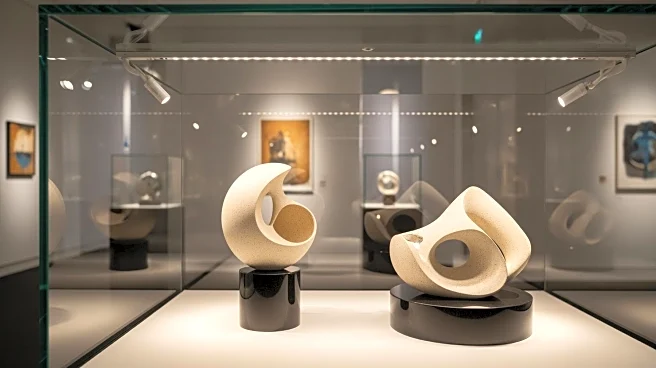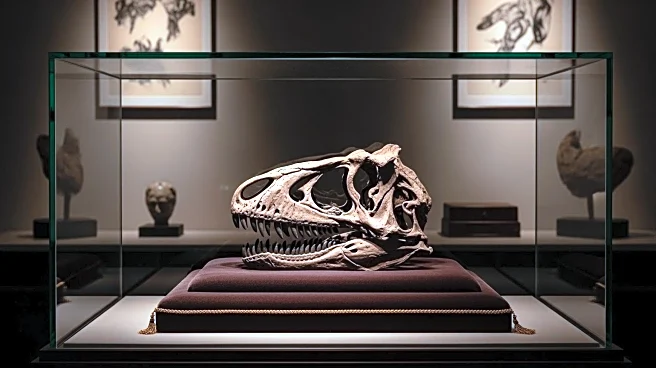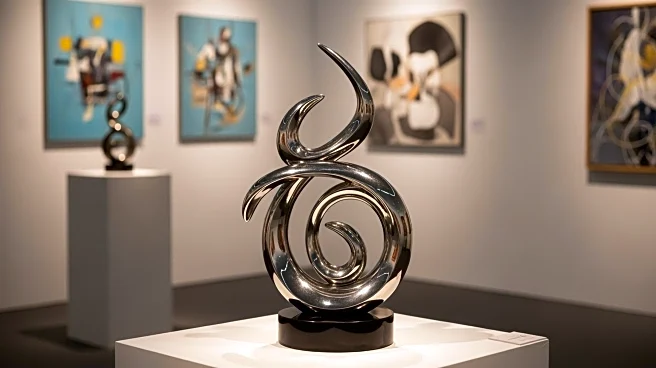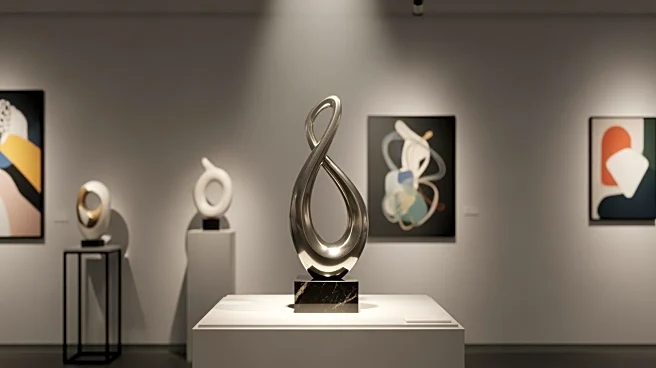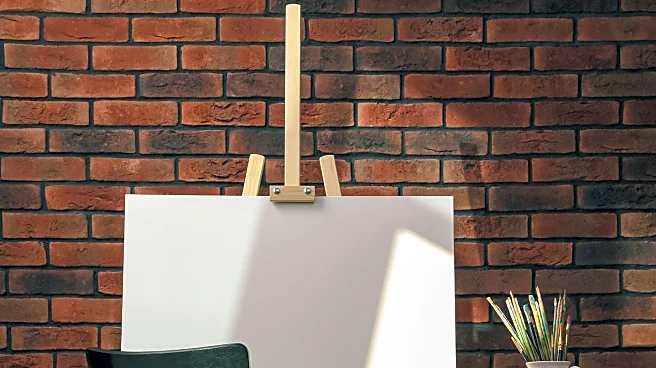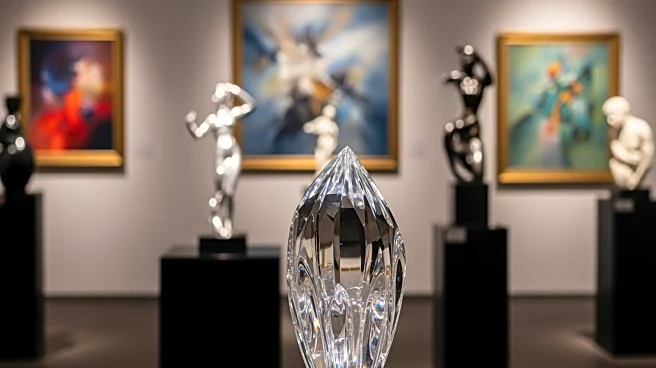What's Happening?
The Pavilion of Art and Design (PAD) in Mayfair's Berkeley Square has experienced heightened sales activity, with many pieces selling quickly on the first day. The event showcases limited-edition designs, attracting a well-heeled crowd eager to purchase
unique items. Notable sales include a Judas table by Danish designer Finn Juhl and a bar cart at Rose Uniacke, which sold instantly. The event features works from various designers, including Maurice Marty, Alvar Aalto, Carlo Bugatti, Tristano di Robilant, Max Lamb, and Felicity Aylieff. These pieces range from furniture to glass sculptures and ceramics, highlighting the diversity and creativity in the design sector.
Why It's Important?
The high demand at PAD underscores the growing interest in limited-edition and collectible design pieces. This trend reflects a broader shift in consumer preferences towards unique and high-quality items, which can drive innovation and creativity in the design industry. The success of the event also highlights the economic potential of the design sector, as collectors and enthusiasts are willing to invest significant amounts in these pieces. This can lead to increased opportunities for designers and galleries, fostering a vibrant market for artistic and design creations.
What's Next?
As the event continues, more sales are expected, potentially setting new records for the design sector. Designers and galleries may leverage this success to expand their offerings and explore new collaborations. The popularity of unique design pieces could influence future trends, encouraging more designers to experiment with materials and techniques. Additionally, the event's success may attract more international attention, positioning PAD as a key player in the global design market.
Beyond the Headlines
The event highlights the cultural significance of design as an art form, with pieces that blend functionality and aesthetics. It also raises questions about sustainability, as designers like Max Lamb explore innovative materials and processes. The focus on limited-edition designs may prompt discussions about exclusivity and accessibility in the art and design world, challenging traditional notions of value and prestige.
